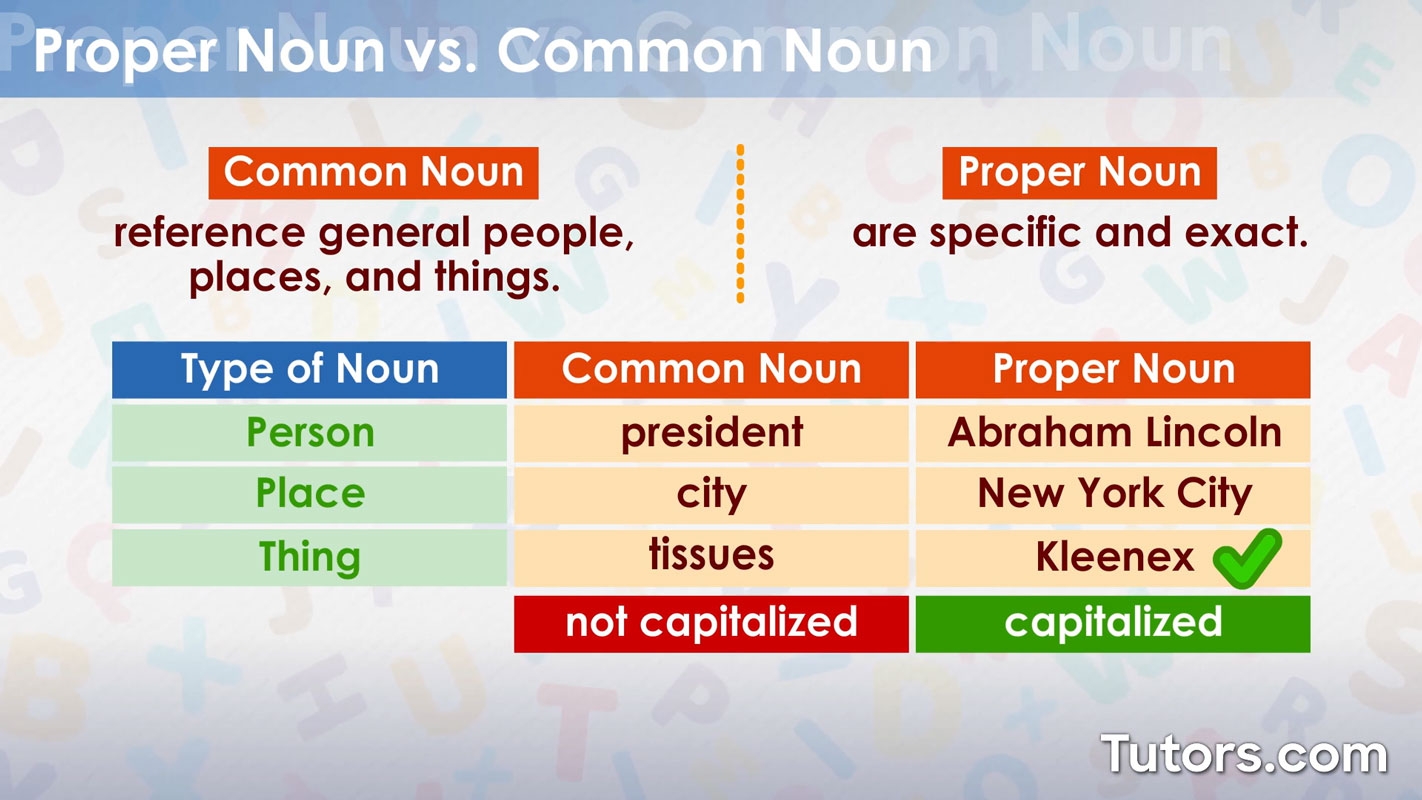When it comes to understanding the English language, one of the basic concepts that students learn is the difference between common nouns and proper nouns. Both types of nouns serve different purposes in sentences and it is important to know how to differentiate between them.
Common nouns are general names given to people, places, things, or ideas. They are not capitalized unless they appear at the beginning of a sentence. On the other hand, proper nouns are specific names of people, places, or things and always begin with a capital letter.
Common Nouns and Proper Nouns
Common nouns can refer to any person, place, thing, or idea in a general sense. For example, “teacher,” “city,” “car,” and “happiness” are all common nouns. They do not point to any specific person, place, thing, or idea but rather represent a broad category. Common nouns are essential in constructing sentences as they provide the basic building blocks of language.
Proper nouns, on the other hand, are specific names that refer to individual people, places, or things. For example, “Ms. Smith,” “New York City,” “Toyota Camry,” and “Christmas” are all proper nouns. These names are capitalized to distinguish them from common nouns and give them a unique identity. Proper nouns help to provide clarity and specificity in communication.
It is important to remember that common nouns can become proper nouns when they are used as specific names. For instance, “man” is a common noun, but when we say “John is the man I met yesterday,” “man” becomes a proper noun because it is referring to a specific individual named John. This distinction is crucial in understanding the nuances of language.
Common nouns and proper nouns work together to create meaningful and coherent sentences. While common nouns provide the general framework of language, proper nouns add specificity and detail to our communication. By mastering the use of both types of nouns, writers can effectively convey their thoughts and ideas to others.
In conclusion, common nouns and proper nouns are fundamental elements of the English language that serve different purposes in sentences. Understanding the distinction between these two types of nouns is essential for effective communication. By identifying common nouns as general names and proper nouns as specific names, writers can enhance the clarity and precision of their writing.
